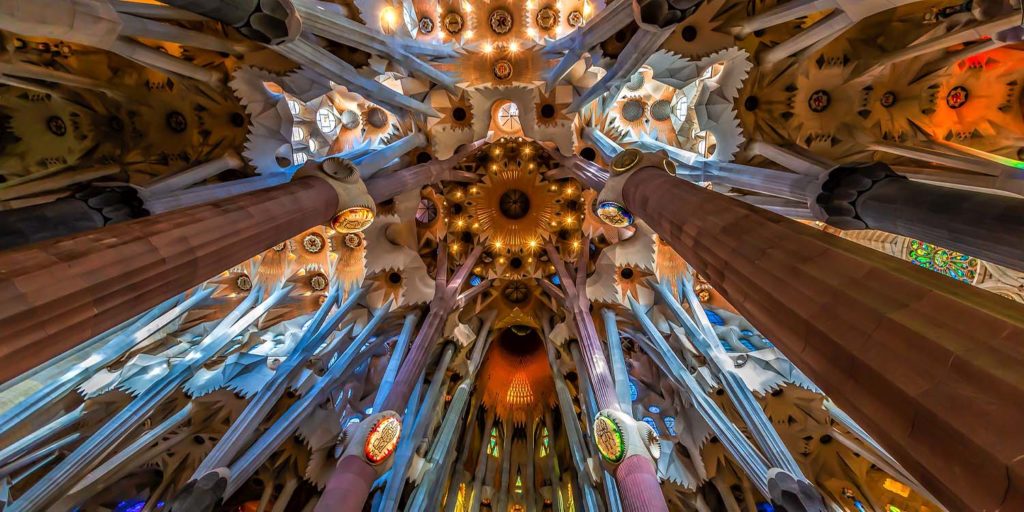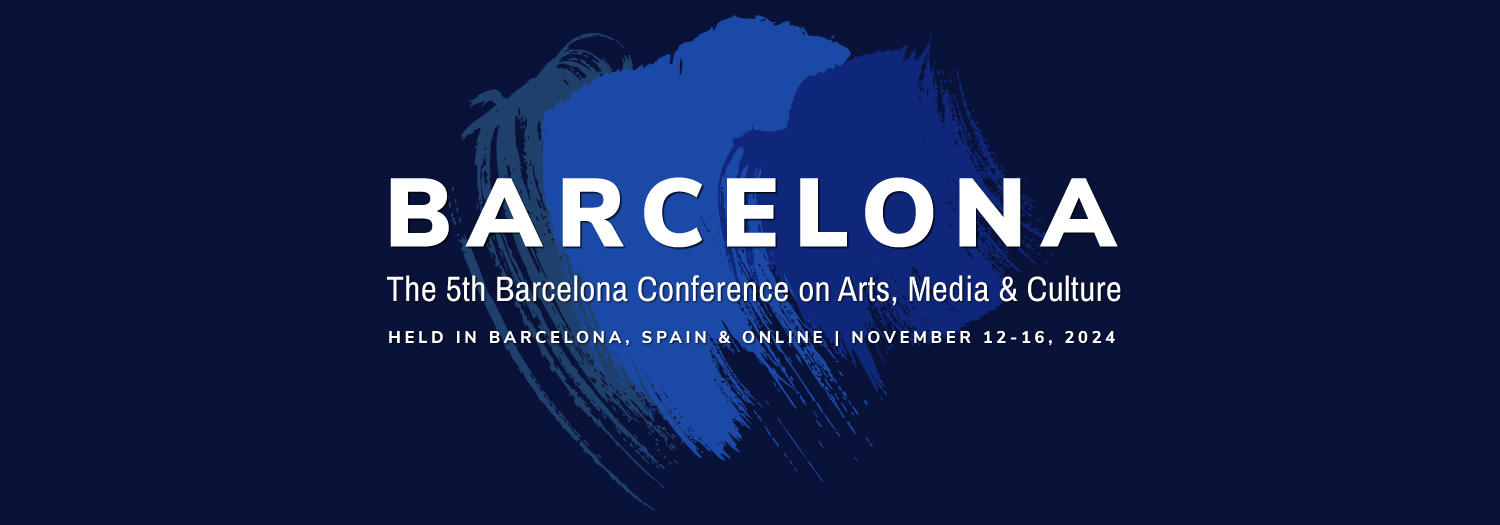In September 2022, IAFOR will be hosting The 3rd Barcelona Conference on Arts, Media & Culture (BAMC2021) alongside The 3rd Barcelona on Education (BCE2021) in partnership with the University of Barcelona and the IAFOR Research Institute at the Osaka School of International Public Policy (OSIPP) at Osaka University. But why exactly did the Organising Committee decide to base this interdisciplinary conference in this city? What exactly is it about Barcelona that makes it perfect for a forum on arts, media and culture?
Located on the coast of north-eastern Spain, Barcelona is the capital and largest city of the autonomous region of Catalonia, as well as the second most populous municipality of Spain. Since its founding as a major Roman city over two-thousand years ago, Barcelona has been known as one of Europe’s greatest cities – an inimitable mix of traditionalism and modernism, decorated with iconic buildings by legendary architects Antoni Gaudí and Lluís Domènech i Montaner, countless displays of public art, street performances and live music festivals.

Architecture
It is impossible to have a conversation about the culture of Barcelona without speaking of its unique and varied architecture. Walking through the streets rewards you with a rich atmosphere and character that can be found nowhere else in Europe. Even the streets themselves are designed to create a vibe, with chamfered corners that free up space to encourage its inhabitants to stop and interact with one another. Though Barcelona is probably most well-known for its connection to Antoni Gaudí, the city exhibits a wide variety of architectural styles, including Gothic Barcelona Cathedral, the red-brick arabesque style known as Neo-Mudéjar, and the classically Catalonian Noucentisme, and the city is also home to buildings by modern architecture legends such as Norman Foster, Frank Gehry, Ludwig Mies van der Rohe, and Richard Meier.
And then of course, there is the magnificent Catholic basilica, La Sagrada Família, which has to be seen to be believed. Over a hundred years in the making and still unfinished, this remarkable feat of architecture and engineering was designed by Antoni Gaudí. Art critic Rainer Zerbst said "it is probably impossible to find a church building anything like it in the entire history of art", and Paul Goldberger describes it as "the most extraordinary personal interpretation of Gothic architecture since the Middle Ages".

Art
Over the past hundred years, Barcelona has become Europe’s home of public art, with the streets themselves becoming gallery spaces for world-renowned artists to present their works. The traditional architecture of the city’s streets juxtaposed with the innovative and often provocative modern sculptures create a truly exceptional atmosphere that celebrates centuries of mankind’s creativity and ingenuity.
Standout pieces include Joan Miró’s (himself born in Barcelona) four purpose-made artworks for the city, including a gigantic mosaic at the Barcelona El Prat airport and another in the centre of La Rambla. Roy Lichtenstein’s gigantic "Face of Barcelona" was designed specifically for this city, and symbolises the colossal changes that the city underwent preparing for the 1992 Olympics, and at 15-feet high, it’s hard not to notice this colourful and striking visage. Colombian Fernando Botero’s "Fat Cat" and "Fat Horse", located in Raval and El Prat airport respectively, are two of the city’s best-known installations and are perfect examples of his signature style. Add to this the countless independent art galleries and vibrant graffiti that decorates many surfaces throughout the city, it’s not hard to see why many people call Barcelona the European capital of public art.
Pablo Picasso (who needs no introduction) was born in Malaga, and spent most of his life in France, but spent his formative years in Barcelona and considered the city to be his home. Modern-day Barcelona honours this with a museum dedicated to the artist a short walk from Parc de la Ciutadella that houses an extensive collection of the influential Spanish cubist's works & masterpieces.

Music
Influenced by the Catalonians’ love of music, for many years Barcelona has been seen as one of the most important locations for live music and music festivals. The city is home to over 50 music festivals of varying sizes, from a multitude of genres including pop, jazz, rock, electronic and folk.
Notable locations include Parc del Fòrum, a huge public park located between the district of Sant Martí in Barcelona and Sant Adrià de Besòs, which is the stage for one of Europe’s biggest music festivals, Primavera Sound, which has hosted international acts such as Beck, Björk, Gorillaz, Massive Attack, and Radiohead. L’Auditori is home to Barcelona’s prestigious Symphony and National Catalan Orchestra, and is famed for its classical, traditional, jazz and folk musical concerts. Heliogàbal is an unusual venue that showcases not only music, but also an assortment of artistic platforms, including photography, literature, and poetry. Together with the regular sound of street performers that accompanies strolls down La Rambla and Passeig de Sant Joan, Barcelona is a city that is always saturated in sound.

Food & Drink
Thanks to its location close to both the mountains and the sea, Barcelona has developed a reputation as one of Europe’s greatest dining cities, with everything from affordable yet delicious tapas bars to Michelin star restaurants with cuisine from the greatest chefs in Spain. Obviously, Barcelona is the home of Catalonian cuisine, and dishes such as calçots (grilled green onions with romesco sauce), esqueixada (salad with cod, onions, and olives), and mató (goat cheese with honey, and walnuts) are must-trys when visiting, but Spanish classics such as paella and Iberico ham are prepared to perfection in many of the city’s eateries. In recent years, the younger generation has inspired an insurgence of international cuisine, and more mainstream staples such as pizza, tacos, hamburgers, and even craft beer – all of exceptional quality – can easily be found in restaurants throughout the city.
Barcelona is also home to one of the world's most famous food markets, La Boqueria, with specialist stalls selling a mouth-watering mix of fresh vegetables, seafood, fruit, meats, and cheeses out in the open air, a feast for the eyes (and the stomach!). The market also hosts restaurants and bars with patrons lined up along the aisles, stopping for a quick bite as they go about their day, or enjoying a lengthier meal with myriad plates of colourful tapas and glasses of wine. A truly magical experience, buzzing with life and culinary opportunities, La Boqueria is a foodie's paradise.

Catalonian Culture
Barcelona displays its position as the capital of Catalonia proudly and exuberantly. Catalan culture, despite being less well-known than Spanish culture, boasts a huge history as well as its own unique traditions. Since the arrival of democracy, the Catalan culture has been promoted, both by recovering works from the past and by stimulating the creation of new works. Barcelona houses a great number of museums, which cover different areas and eras, and many of them celebrate Catalonia’s unique history, including the Museum of the History of Catalonia and the National Museum of Art of Catalonia. Visitors to Barcelona can also experience dance performances, masquerades, giant papier mache puppet processions, and even the region’s human tower teams on the streets at different times of the year.
Although the Catalonian language is more widely spoken in the rest of the Catalonian region, Barcelona is still a bilingual city, with many of the residents speaking both Spanish and Catalonian, and Catalonian is the primary language taught in most schools.
It may share similarities with Spanish culture, but Catalonian culture is quite different, and locals are resolutely proud and passionate about their heritage and traditions, and Barcelona is perhaps one of the best places in the world to experience this vibrant culture.
Conclusion
From these points it is clear that even if Barcelona is not Europe’s definitive capital of arts, media and culture, it is certainly a strong contender, and certainly an ideal location for IAFOR’s joint conferences on Arts, Media & Culture and Education.
The BCE/BAMC2022 Organising Committees are currently calling for papers to be presented at the joint event, submit your abstracts by July 5 to participate.
To participate in BCE/BAMC2022 as an audience member, please register for the conference via the conference websites. (Registration for either conference will allow delegates to attend sessions in the other.)
Sessions will also be available for IAFOR Members to view online. To find out more, please visit the IAFOR Membership page.


You must be logged in to post a comment.